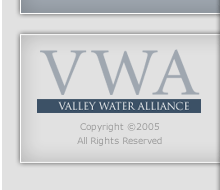
September 28, 2005
More Research Is Needed to Develop a Final Restoration Plan For the San Joaquin River
A draft Restoration Strategies Report developed jointly by the Natural Resource Defense Council (NRDC) and Friant Water Users Authority has finally been made public despite attempts by environmental interests to delay its release. The report outlines the difficulties inherent in restoring the San Joaquin River to a naturally reproducing salmon fishery as demanded by a coalition of environmental groups led by NRDC. The conceptual document illustrates the need for more detailed studies to determine what amount of river restoration is realistic and achievable.
As part of a process to settle a 1988 lawsuit concerning the San Joaquin River, joint studies were conducted to investigate restoration of the river to support a naturally reproducing salmon fishery and related water supply possibilities. The studies were conducted jointly by NRDC and Friant beginning in 1999 and ending in 2003 with the completion of the draft Restoration Strategies Report. Repeated attempts to make the Restoration Strategies Report public were resisted by NRDC. The report became public when Friant submitted the report to the California Department of Water Resources (DWR) and the U.S. Bureau of Reclamation due to a notice of termination of grant funds for continued river restoration studies issued by DWR.
The report highlights the significant improvements needed for restoration, beyond the enormous amount of water required for salmon restoration on the San Joaquin River. The report makes several other critical findings relating to river restoration including:
- Creation of a naturally reproducing salmon fishery would require much of the water currently used by communities within the Central San Joaquin Valley.
- Despite all of the studies completed, it is still unknown just how much water would actually be needed to restore a salmon fishery on the San Joaquin River.
- Re-creating the river environment for a salmon fishery would be difficult at best and would cost hundreds of millions of dollars.
- The study did not assess whether there would be enough cold water in the river at all times to sustain a salmon fishery, which is a critical requirement.
The report estimated the cost of the physical improvements to the river channel alone would exceed $650 million. Additionally, the report estimated a naturally reproducing salmon fishery would require from 385,000 acre feet to 1.8 million acre-feet of water. However, the annual firm water supply contract for Friant water users is only 800,000 acre-feet. Staggering numbers such as these would have a detrimental impact to our regional economy as well as social and cultural impacts. The need for continued research to apply accurate conclusions to the reports findings is necessary. Funding for continued research into the requirements for realistic river restoration has been stalled by DWR.
“We support the development of a river restoration plan based on sound science that does not detrimentally impact the social, cultural and economic well-being of the Central Valley,” said Dale Brogan, secretary/treasurer of the Valley Water Alliance. “The release of the draft Restoration Strategies Report provides critical information for all stakeholders and decision-makers so meaningful river restoration discussions based on reality can be conducted.”
